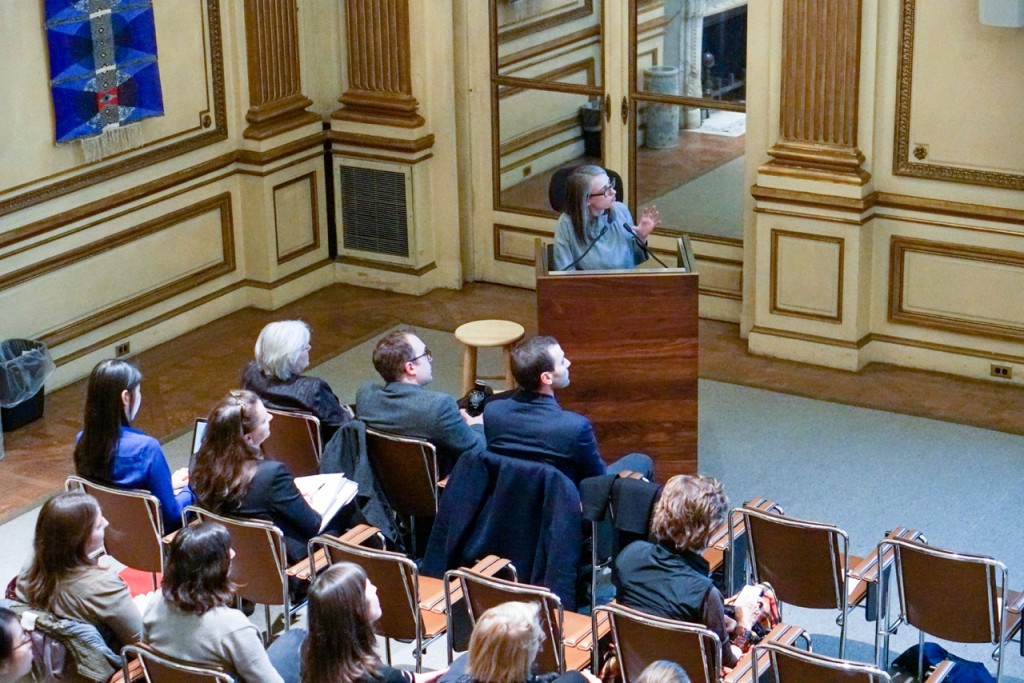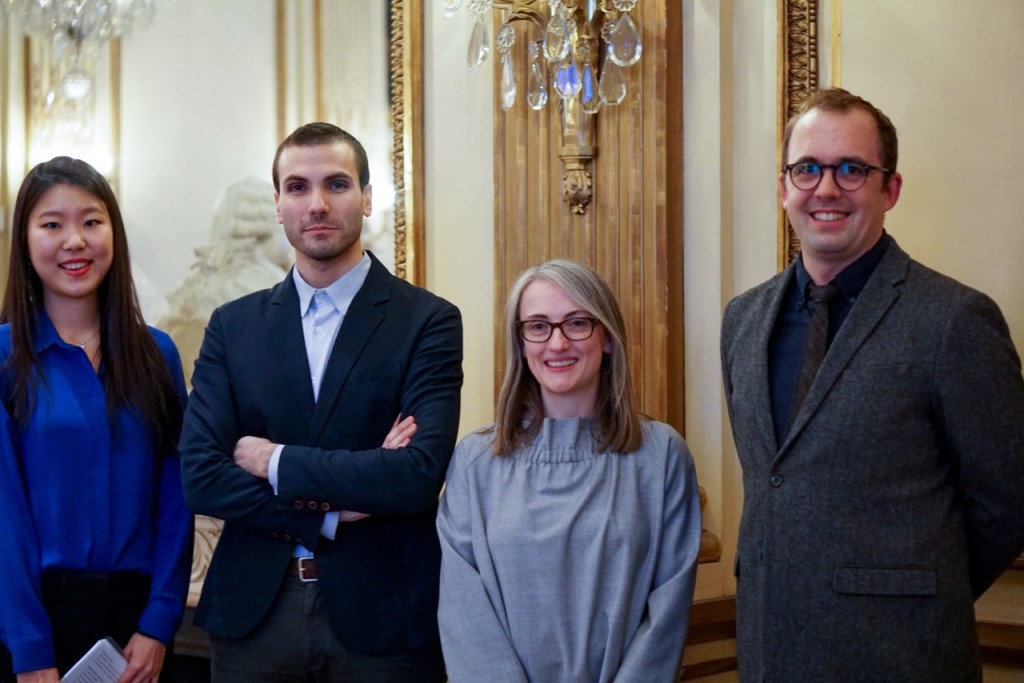This week’s contributing blogger, Eana Kim, is a first-year M.A. student in Art History at the Institute of Fine Arts, New York University. Eana graduated from the Hongik University with a bachelor’s degree in Painting in 2016. She has become increasingly interested in time-based media art through this lecture series.
MoMA’s media conservators Kate Lewis, Peter Oleksik, and Ben Fino-Radin delivered a lecture entitled “Media Conservation at MoMA” at the Institute of Fine Arts (IFA) on Monday, November 28th, 2016, as part of the “Topics in Time-based Media Art Conservation” series. The lecture was structured in the three sections – Collection Care, Exhibition, and Digital Preservation – to highlight the core activities and shared responsibilities of the conservator’s day-to day work at MoMA.
Peter Oleksik opened the lecture by introducing MoMA’s long and rich history of collecting media art, which started as early as 1935 with the acquisition of film-based artworks. With the launch of the video collection program in 1973, the museum also showed an early commitment to emerging video works and pioneering artists, such as Joan Jonas and Nam June Paik. Today, the museum houses one of the largest media art collections in the world and the media art conservation department – established in 2007 – has significantly shaped and served the field through major research and educational initiatives, such as Matters in Media Art.
Oleksik guided the audience through the multifold tasks that constitute the collection care of media artworks, ranging from the recent digitization of 4000 analog videotapes to the assessment of born-digital works during the acquisition process.

Kate Lewis delivers her presentation in the Lecture Hall, Institute of Fine Arts. Photo credit: Nita Lee Roberts, Institute of Fine Arts
Following this introduction, Kate Lewis discussed the exhibition of complex installations, such as the sonic work The Forty Part Motet by Janet Cardiff, to illustrate that artist’s installation specifications can be variable or clearly defined. Lewis stressed the importance of capturing different artworks iterations and argued that the exhibition of TBM artworks provides deep insights, which in turn can inform conservation practice. Her case studies clearly demonstrated the ethical and conceptual responsibilities of TBM conservation in light of ever-changing technologies.
Subsequently, Ben Fino-Radin shared one of the most recent challenging projects he completed with his colleagues in 2016: the conservation of the work Lovers (1995) by the Japanese artist Teiji Furuhashi. Lovers is an immersive, interactive multimedia installation that shows life-size projected images of the artist and his collaborators from a tower of computer-controlled videos and slides.
The artwork had not been on view since its inaugural exhibition in 1995 and as a result, the project involved major technical and ethical challenges that conservators often inevitably face, especially when TBM artworks have not been installed over longer periods of time. Due to the missing source code, the now-obsolete equipment, and the absence of previous artwork documentation, the conservation process required meticulous reverse engineering to understand the logic of the artwork.
Fino-Radin continued his presentation by introducing MoMA’s “digital art vault” and the creation of Binder, a free open-source software, designed to manage the preservation of digital collections. Kate Lewis then concluded the lecture by announcing MoMA’s new “Media Conservation Initiative”. This initiative seeks to advance new strategies for the field of time-based media art preservation. The Andrew W. Mellon Foundation is funding this educational four-year project, which includes a series of TBM conservation workshops and supports four TBM art conservation fellowships.

(From left) Eana Kim, Ben Fino-Radin, Kate Lewis and Peter Oleksik at the Lecture Hall,
Institute of Fine Arts. Photo credit: Nita Lee Roberts, Institute of Fine Arts
The three speakers gave a very insightful overview of the current state of time-based media art conservation. It was delightful to see how their leadership and educational activities have served the field and contributed to TBM art conservation as a whole.
A video of this lecture is available at: https://vimeo.com/194415009.
VoCA is pleased to present this blog post in conjunction with the NYU/IFA Conservation Center’s Topics in Time-Based Media Art Conservation lecture series, which took place during the 2016 Fall semester. The series was organized by Hannelore Roemich and Christine Frohnert and was generously supported by the Andrew W. Mellon Foundation. The full schedule can be found at https://www.nyu.edu/gsas/dept/fineart/events/time-based-media.htm
